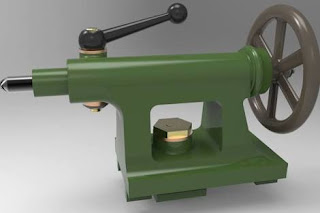In this article I going to describe you about how does a four stroke diesel engine work.
Diesel engine which is also known as compression ignition engine is widely used in automobile industries. Many big vehicles such as truck, bus, car etc. used diesel engine as the power unit because of its higher torque and greater mileage than petrol engine. Diesel engine is very popular in Indian market as well as in other countries because of lower price of diesel than petrol in many countries. So the requirement of diesel engine is much more than petrol engine.
The ignition temperature of diesel is lower than petrol so the working of diesel engine is slightly different than petrol engine.
Working of Four Stroke Diesel Engine
The power generation process in four stroke diesel engine is also divided into four parts. Each part is known as piston stroke. In IC engine, stroke is referred to the maximum distance travel by the piston in a single direction. The piston is free to move only in upward and downward direction. In four stroke engine the piston move two time up and down and the crankshaft move two complete revolution to complete four piston cycle. These are suction stroke, compression stroke, expansion stroke and exhaust stroke.
Suction stroke:
In the suction stroke or intake stroke of diesel engine the piston start moves from top end of the cylinder to bottom end of the cylinder and simultaneously inlet valve opens. At this time air at atmospheric pressure drawn inside the cylinder through the inlet valve by a pump. The inlet valve remains open until the piston reaches the lower end of cylinder. After it inlet valve close and seal the upper end of the cylinder.
Compression stroke:
After the piston passes bottom end of the cylinder, it starts moving up. Both valves are closed and the cylinder is sealed at that time. The piston moves upward. This movement of piston compresses the air into a small space between the top of the piston and cylinder head. The air is compressed into 1/22 or less of its original volume. Due to this compression a high pressure and temperature generate inside the cylinder. Both the inlet and exhaust valves do not open during any part of this stroke. At the end of compression stroke the piston is at top end of the cylinder.
Power stroke:
At the end of the compression stroke when the piston is at top end of the cylinder a metered quantity of diesel is injected into the cylinder by the injector. The heat of compressed air ignites the diesel fuel and generates high pressure which pushes down the piston. The connection rod carries this force to the crankshaft which turns to move the vehicle. At the end of power stroke the piston reach the bottom end of cylinder.
Exhaust stroke:
When the piston reaches the bottom end of cylinder after the power stroke, the exhaust valve opens. At this time the burn gases inside the cylinder so the cylinder pressure is slightly high from atmospheric pressure. This pressure difference allows burn gases to escape through the exhaust port and the piston move through the top end of the cylinder. At the end of exhaust all burn gases escape and exhaust valve closed. Now again intake valve open and this process running until your vehicle starts.






Comments
Post a Comment